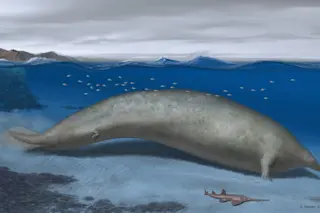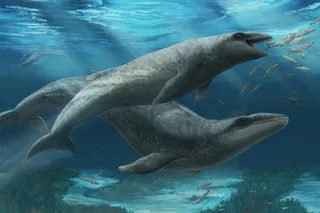A massive new whale discovered in the Peruvian desert presents a caloric quandary: At somewhere between 170,000 and 680,000 pounds, it would have required an equally massive diet to survive. Yet, Perucetus colossus was a slow, ponderous sort of sea creature that kept to the shallows and coastal regions.
So, what did it do?
Like many modern whales, it may have relied on filter feeding, or it may have munched on sea grass like a manatee. Or it could have suctioned up demersal fishes, crustaceans, mollusks or other slow-moving prey.
Then again, it might have used its triangular teeth to tear off pieces of dead sea creatures, a strategy normally practiced by sharks. Bit by bit, the great whale – which is in the running for the heaviest animal of all time – would have survived.
The current record-holder, the blue whale, weighs somewhere between 290,000 and 330,000 pounds, which ...














